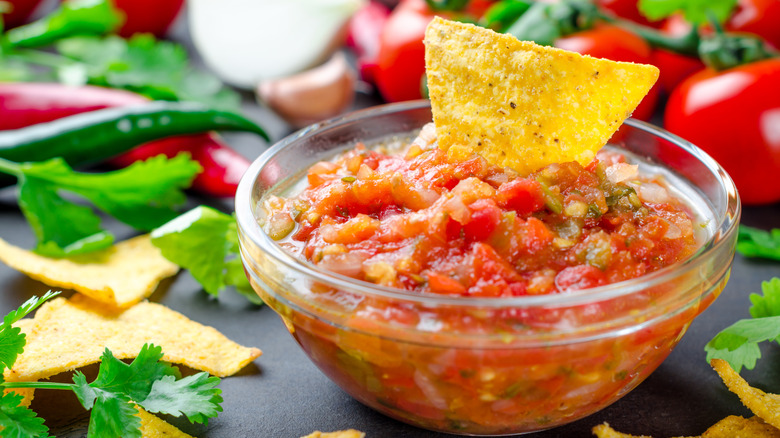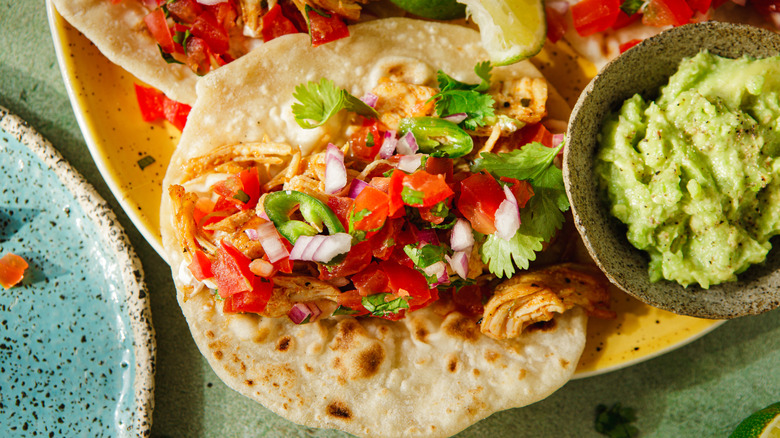How A Mexican Restaurant's Chips And Salsa Can Be A Huge Red Flag
Mexican food is a go-to for punchy, vibrant flavors wrapped in a bevy of textures. Soft and crispy tortillas; smoky, tender meats; and fresh, zingy salsas combine to make some of the most toothsome dishes around. Because of such popularity, however, you may find yourself at a Mexican restaurant that offers a wide variety of dishes, but they all seem to taste quite similar. Worse, you could find yourself facing a dish doused with cheese and a smooth salsa that tastes like a spicy version of ketchup. It's important to remember that authentic Mexican cuisine will taste unlike everyday flavors because many of the ingredients and cooking methods specific to Mexican culture.
Fortunately, you won't have to wait until the main course arrives to find out whether the eatery you're in is serving you the real deal or dishes with merely authentic-sounding names. Chips, salsa, and guacamole can help you determine just how authentic a Mexican restaurant is. Instant red flags include jarred salsa or guacamole that seems to be several hours (or worse, days) old.
Another yardstick by which to judge a Mexican restaurant is its tortilla chips and tortillas. Whether crunchy or soft, you should know how to tell if the restaurant is making its own tortillas. If the tortilla chips are thin and shatteringly crunchy, like the packaged, mass-produced kind, the restaurant likely isn't doing Mexican cuisine justice. Freshly made tortilla chips tend to be thicker, with little or no seasoning, and have a lightly sweet corn flavor thanks to its fresher masa flour.
Authentic Mexican restaurants have fresh, chunky salsa and in-house tortilla chips
As for salsa, a competent eatery will always give you the freshly-made kind. This means it will likely be at room temperature or even warm (such as for a roasted salsa). If what you are served is cold, it is surely from the fridge and not freshly made. Fresh salsa will also have bright flavors courtesy of freshly chopped onions, chilies, cilantro, and other components. Some places also put a local spin on salsa with additional ingredients, like the butter-enriched salsa of East Texas, but the underlying fresh flavors should always be present.
Similarly, guacamole at an authentic Mexican restaurant should never be cold, which can also indicate it's spent time in a refrigerator. While it's easy to store guacamole without it turning brown, a restaurant will ideally have the freshly-made sort where the earthy, creamy avocado flavors are at the forefront.
A final red flag to watch out for is the creamy, yellow substance called queso. There is a place for cheese in Mexican cuisine, such as the crumbly, white queso fresco that may adorn some dishes. However, the semi-liquid yellow stuff is more like Velveeta than anything authentic and isn't exactly a traditional component of chips and salsa.

